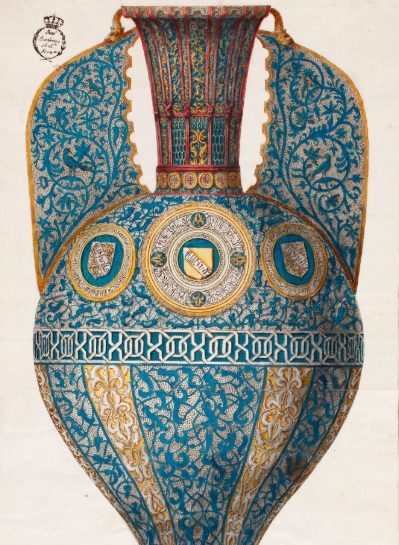- HubPages»
- Home and Garden»
- Home Decorating»
- Wall Decor & Artworks
Azuleijos: The Fascinating Portuguese Tile Art

Azuleijos Tile Art: Meaning, Origin & History
Azuleijos, Azulajy, Al - Zulajy, and Zellige are all interpretations of the same term. Azulejos means 'polished ceramic stone'. It is a glazed handmade ceramic tile art made famous by the Arabs and Moors(Berber tribe) in the 12-13th century.
Originally in one colored decorative blue design, you can now find other hues such as light brown, bright yellow, dark red, leafy greens, and polychrome designs.
Tiles displaying human, animal figures, religious scenes, historic events, and geometric patterns are the most common.
It used to beautify facades of Palaces, churches, schools, art studious, subway stations, monasteries, ceilings, pavements, fountains, vaults, and nowadays has even found prominence in restaurants and bars.
The beauty of Azulejos lies in its texture, geometric motifs, designs, and temperature control - dampness, heat, noise reduction, which is a unique feature when used indoors and outdoors.
The Azulego craft is an unmistakable part of the Portuguese cultural and historical identity, and you will find many places in Lisbon and Porto displaying azuleijos facades and tile work.
You can find striking similarity of this art to Byzantine and Roman mosaics.
This craft has survived right from the 12th century till this current period and is prevalent in all Portuguese and Spanish colonies from Goa, Macau, Philippines, Lusophone Africa, Brazil, East Timor, South America, North America, etc.
Seville in Spain was the major center where this art flourished. This Zalij craft is most famous in Egyptian and Moroccan traditions and you will find its spread across the architecture of the country.
Goa is the only place that has carried forward the legacy in Asia with much devotion, and you will find a dazzling and colorful display of these tiles in museums, tourist stalls, buildings, and street signs.
An Ornate Artistic Expression of Azuleijo Art

Best Places to See Azuleijo Art in Portugal:
1. Fronteira Palace
2. Jardim Da Quinta Dos Azulejos
3. National Azulejo Museum
4. Andre Saraiva Mural
5. Monastery of Sao Vincente De Fora
6. Quelez National Palace
7. Porto Cathedral
8. Sao Bento Station
9. Capelo De Almas
10. Banco De Materiais
Art Of Making An Azuleijo: Shapes, Sizes, Colors and Meanings
The traditional white-blue color was imbibed from the Ming dynasty porcelain art. Nowadays, Azuleijo tile art is more artistic and comes in varied hues, sizes, shapes, and meanings.
Let's start the Azuleijo baking process:
1. Pick a soft, crack-resistant clay mold: After selection, cut the mold with a cutting machine or cotton thread.
2. Compressing: Pick the cut clay and compress it using a pressure machine to make small cookies. A quality clay is a pre-requisite for getting a perfect shape.
3. Rolling the piece: The cookies are then pressed using a roller to create circular-shaped molds. Use a rectangular tile shaped tracing model and apply it to the rolled mold. Normal tile sizes are 13*14cm.
4. Applying the paste: Dry the cut mold and bathe it in a white color paste. Keep to dry once more. The paint colors are made using pigments, glass powder, and oxides.
5. Engrave the Art: Draw your designs by passing the enamel on molds.
There are various techniques for applying the art - Estampilho, Majolica, and Decalcomania.
Estampilho is the passing of enamel on cast molds. Majolica involves passing the enamel over the glazed surface. Decalcomania uses decals to pass images and fixing them on tiles.
6. Baking: The final process in creating a masterpiece. The designed tiles are heated in an industrial furnace at high temperatures - 1000-1500 degrees C and kept for long hours, sometimes overnight.
Pat dry using a soft cloth. Azuleijos are Ready!
Few Historic Azuleijo Industrial Places:
- Hispano-Moresque Ware (Spanish)
- Talavera De La Reina pottery (Spanish)
- Paterna Pottery (Spanish)
- Talavera Pottery (Mexican)
- El Puente Del Arzobispo Pottery (Spanish)
The Heart of Portuguese Landscape and Visual Identity:
Intricate and imbibed in Portuguese design and architecture, there are few things as quintessential as the Azuleijos. It is one of the few crafts which have survived competition from modern techniques and arts.
Being high in artistic and monetary value, it is prone to vandalism and thefts, and you will find it on display in street corners for sale.
Awareness programs and cultural sessions are conducted by heritage councils to protect the identity of this great art.
Although derived from Islamic heritage, Azuleijos has gained modernity and innovation in the Iberian Peninsula. You will not find any facade, street sign, courtyard, nameplate, or a wall without this glazed art in Portugal.
This content is accurate and true to the best of the author’s knowledge and is not meant to substitute for formal and individualized advice from a qualified professional.
© 2020 Danny








